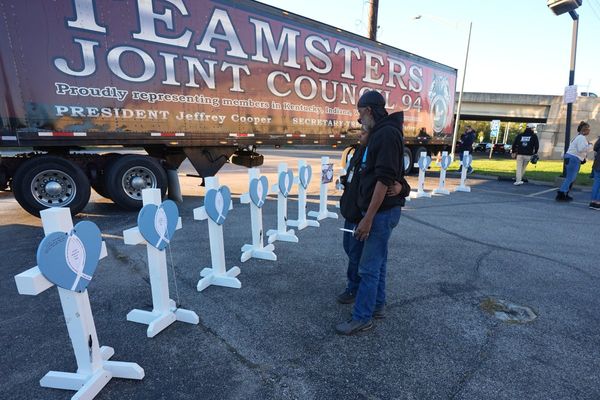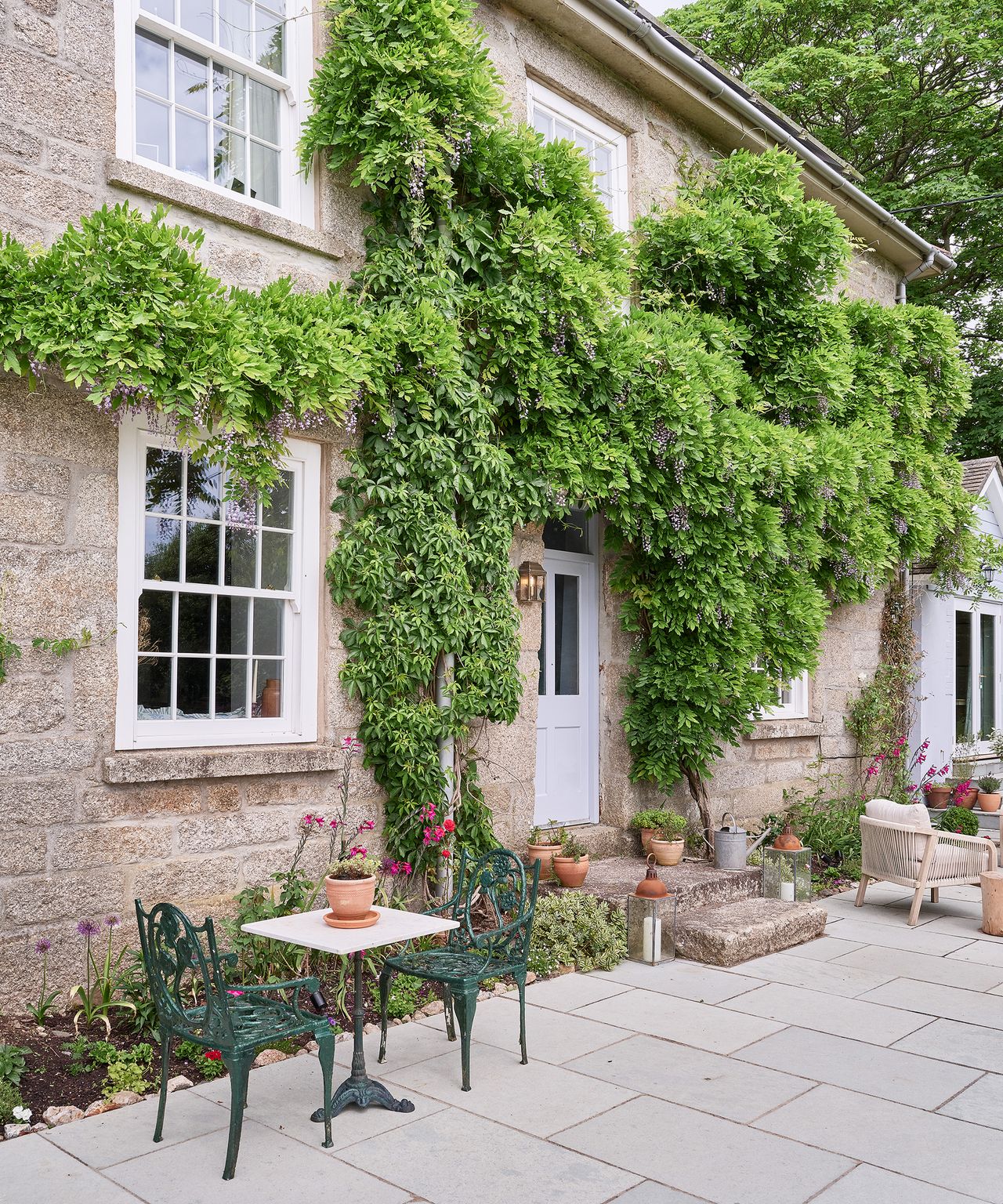
Are climbing plants damaging your home? It's a long-standing debate, with some homeowner saying that they've never had any problems with the beautiful wisteria climbing up the front of their house, while others cite it as the cause of subsidence, damp and crumbling brickwork.
With such high stakes at play, we turned to the experts to find out whether your climbing plants are actually damaging your home. And if so, is there a way to have the best of both worlds?
As with anything, the answer is more complicated than a simple yes or no. However, if you install a framework system, it isn't inevitable that your beloved climbing plants will damage your home's brickwork.
Do climbing plants ruin brickwork?
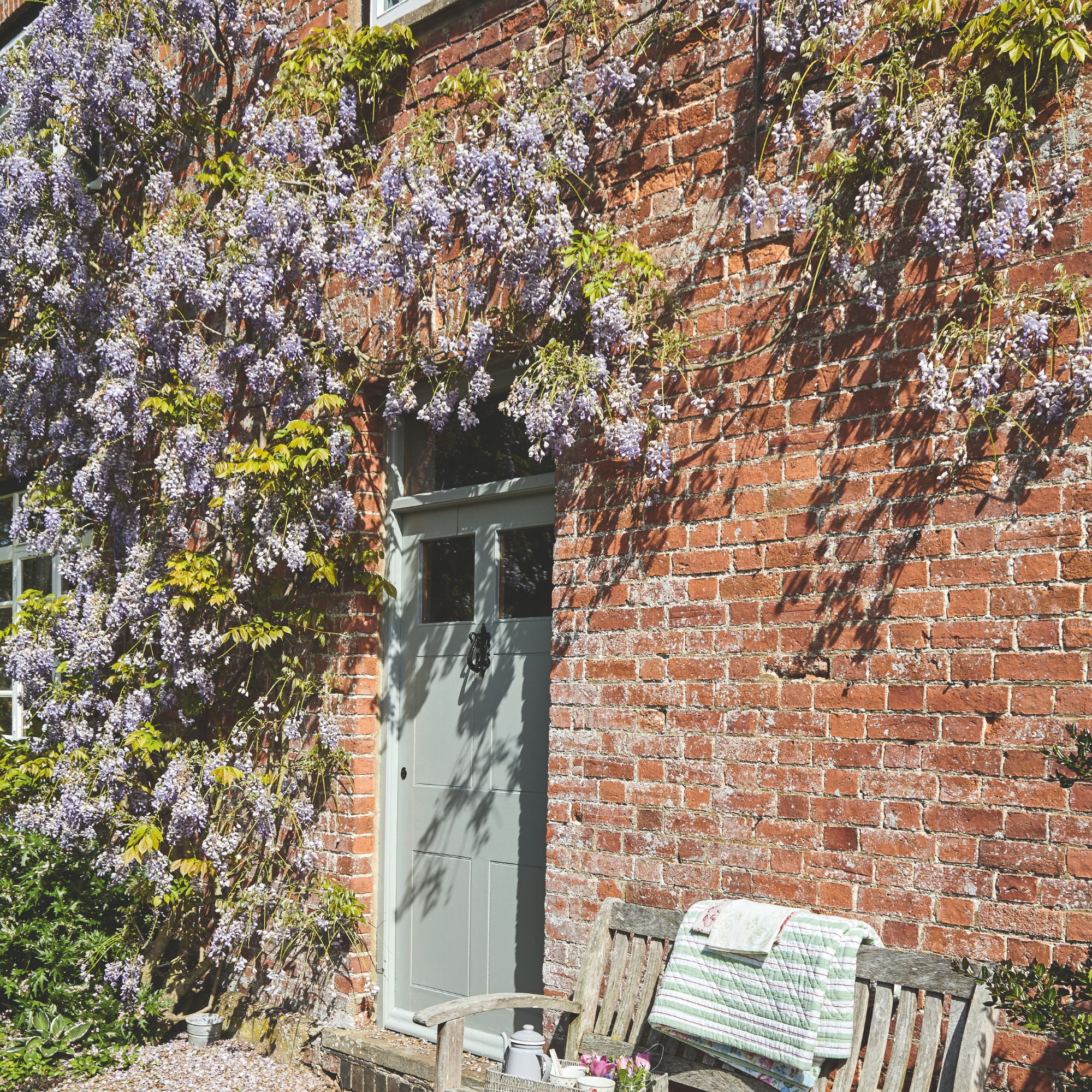
Climbing plants are a certain way to add kerb appeal to the front of a house; however, vigorous free-climbing plants like ivy and wisteria can damage brickwork. ‘Ivy uses tiny rootlets to cling to surfaces, which then penetrate cracks and worsen existing damage,’ says Darren Beard, horticultural expert at Cherry Lane Garden Centres.
Wisteria is one of the most popular choices for training in front of the house; however, you must know how to train wisteria to prevent the thick, woody stems from damaging brickwork. Climbing hydrangea also grows this way.
Instead, consider plants that require tying into a support to protect brickwork, but still give that floriferous look.
Some of the best climbing plants that require support include:
- Clematis – like Crystal Fountain available from Gardening Express
- Climbing roses – like Rosa Veilchenblau or Rosa Penny Lane both available from Crocus
- Star jasmine – available from Thompson & Morgan
- Passionflower – available from Gardening Express
How to prevent climbing plants from damaging brickwork
The best way to prevent climbing plants from damaging brickwork is to train them up a framework. Trellises or wire frameworks are recommended as best practice. Easy to install on a DIY basis, this is also the best method if using climbing plants to hide an ugly fence.
You will need
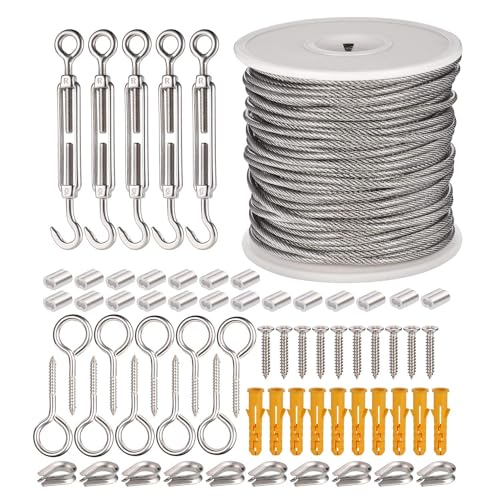
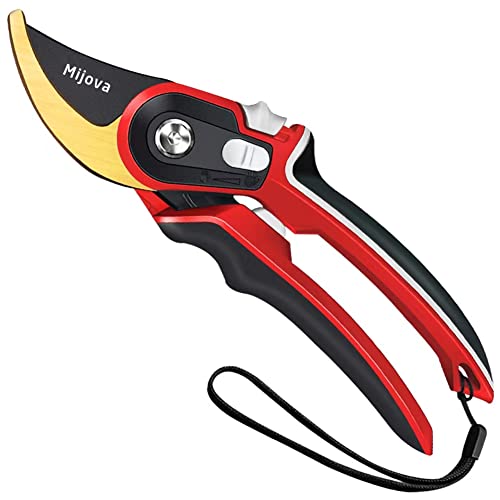
If growing a free-climbing plant on a trellis – like this green pine trellis from B&Q – you must be diligent with pruning, as runners will still try to anchor themselves to the house’s exterior.
Even if growing climbing plants on a trellis or wire frame, it is important to monitor the condition of your walls regularly. ‘Check your walls often for any cracks or broken mortar and fix them quickly, so plant roots can’t sneak in and cause damage,’ says Julian Palphramand, head of plants at British Garden Centres.
FAQs
Do climbing plants make the house damp?
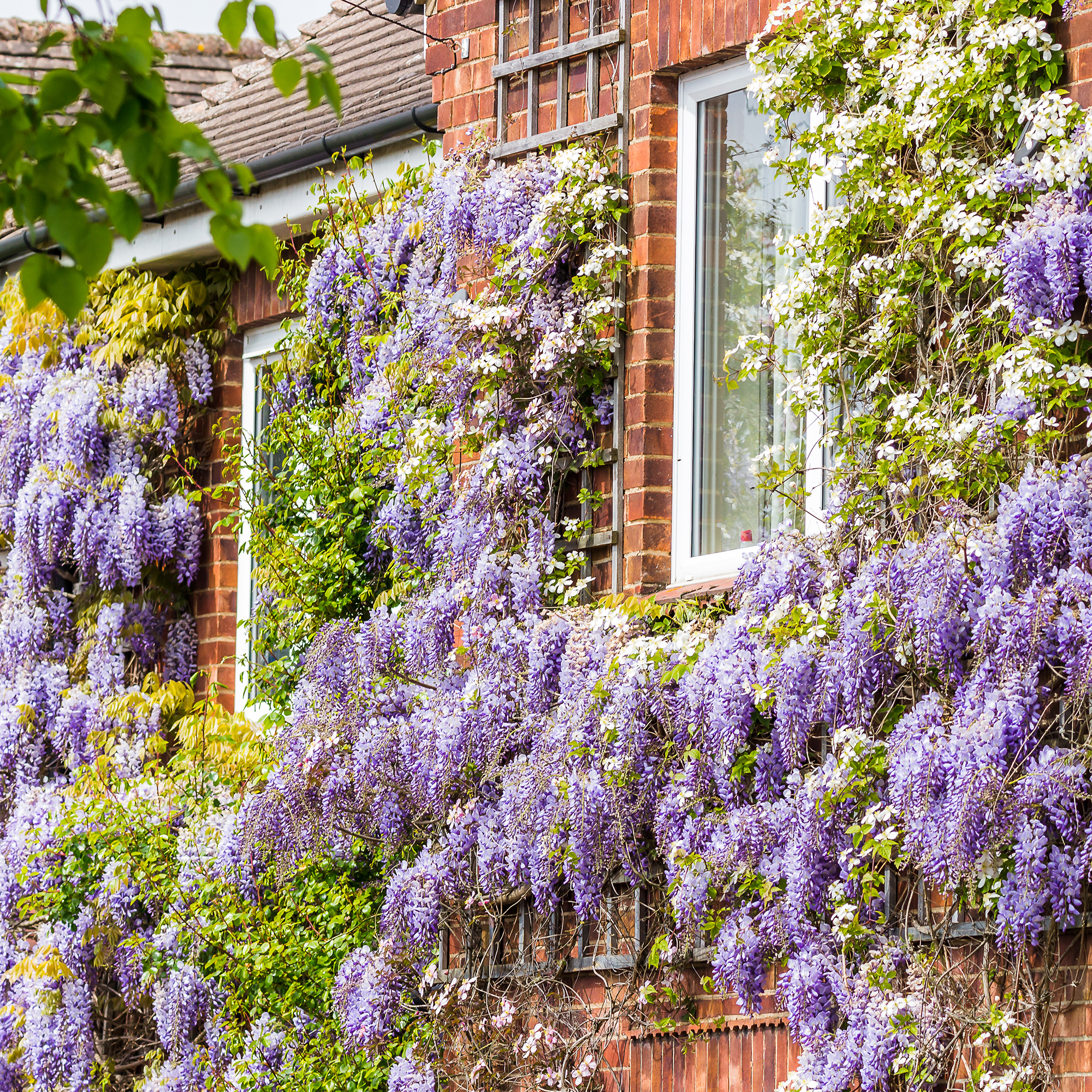
Growing climbing plants too close to the wall can cause damp patches in your walls. This is because the plants trap moisture against the walls. ‘This is a particular problem with north-facing walls or if there is poor airflow,’ explains Darren Beard, horticultural expert at Cherry Lane Garden Centres.
‘Pruning wisteria – and other climbers – to maintain shape and prevent overgrowth is key as ventilation helps keep walls dry and healthy.’
Growing plants up a wire or garden trellis will also help maximise air flow and help protect your home from damp; aim to have the wire 5 to 10cm away from the wall.
Do wisteria roots damage a house's foundations?
Most climbing plants will NOT impact a house’s foundations, and if well cared for, wisteria can be included in that number.

‘Wisteria shouldn’t damage strong foundations because its roots grow mostly down, rather than spreading wide. Standard plants will grow up to three feet below the ground, but older, mature plants can grow as deep as 10 feet. Generally, they will turn away or grow around solid obstacles, like foundations,’ explain experts from SAM Conveyancing. ‘However, if the foundations are weak or damaged, then wisteria’s strong roots may force their way through and cause a subsidence problem.’
Old pipes, water tanks and septic tanks are also at risk from wisteria roots. If planting a new wisteria, protect foundations and pipes by growing wisteria in a pot. ‘You can even bury the tub so that the wisteria still appears to be growing from the ground,’ add experts from SAM Conveyancing.
Heavy-duty tree containers are ideal for growing (and containing) large climbers – B&Qs 350 litres FHG heavy-duty plant pot would be ideal for most climbing plants for pots.
Will having climbing plants on the front of the house invalidate insurance?
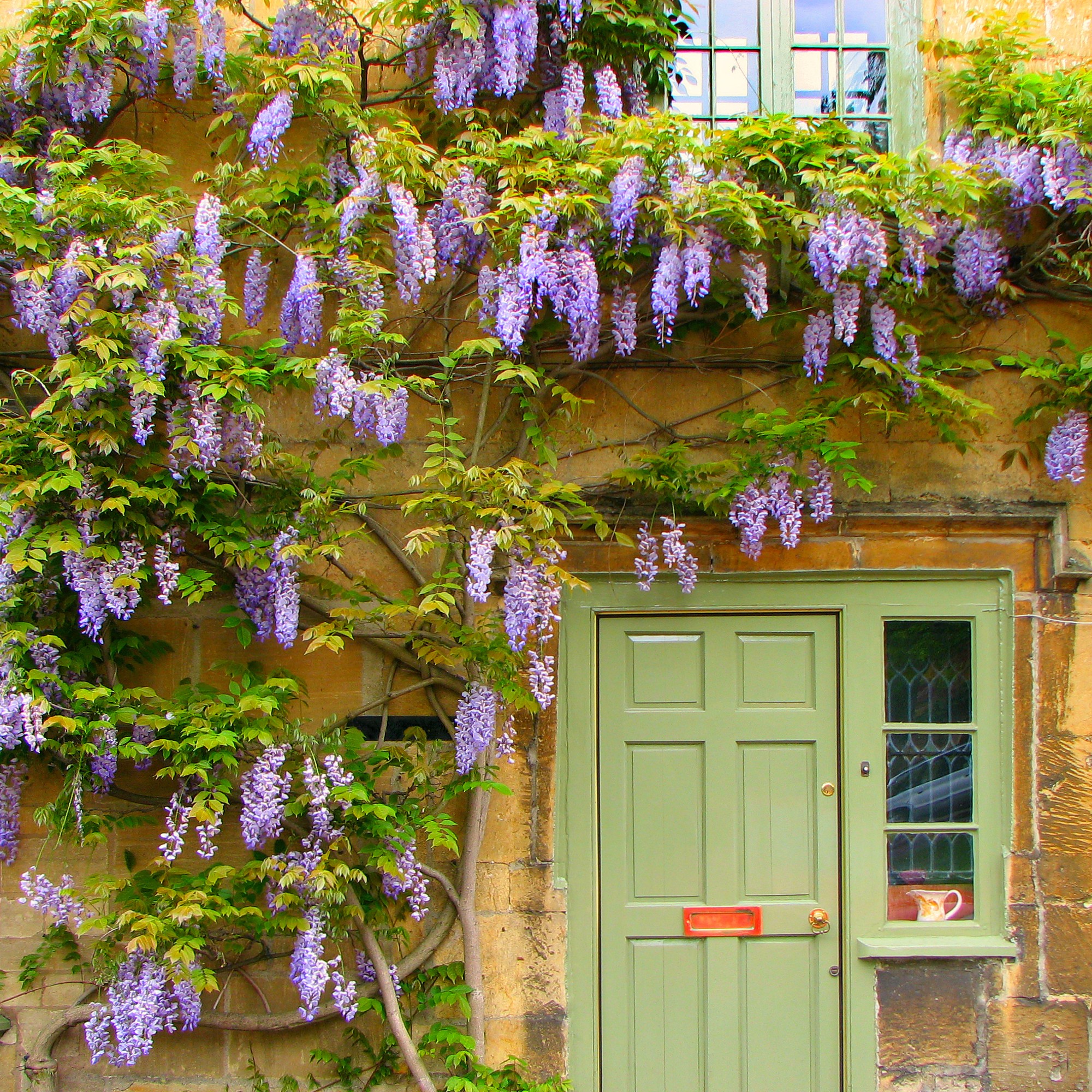
‘Having a climbing plant – like climbing roses – on the house would not invalidate a house insurance, although homeowners do have a responsibility to maintain their property in good condition, and damage by plants would not be covered,’ explains Hannah Davidson, senior home insurance underwriter at Aviva. ‘Although in a well-maintained property the risk is usually minimal, homeowners should make sure that plants don’t grow into brickwork, are too heavy and don’t block guttering and drains.’
If you have found that leaves have started to block the guttering, make sure you know how to clean gutters to prevent problems or having to invest in the costs of replacing gutters around a house.
If you add a framework or trellis, and any climbing plants are safe for houses. This includes wisteria, honeysuckle, clematis and climbing roses. For plants with aggressive roots (such as wisteria or clematis) consider setting the plant within a bucket pot that is buried in the border to contain the roots.
Have you ever had any problems growing climbing plants up your house?
!["[T]he First and Fifth Amendments Require ICE to Provide Information About the Whereabouts of a Detained Person"](https://images.inkl.com/s3/publisher/cover/212/reason-cover.png?w=600)



